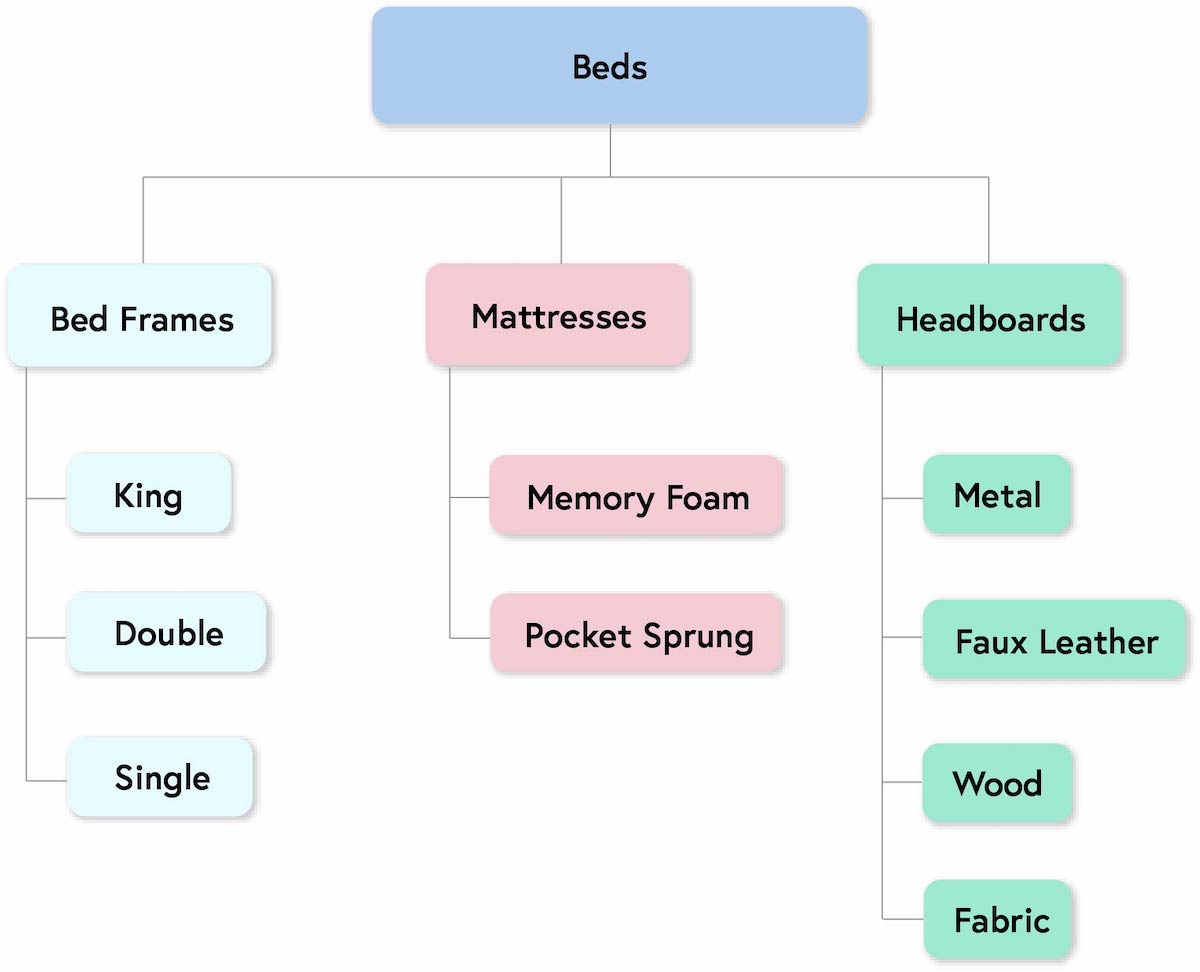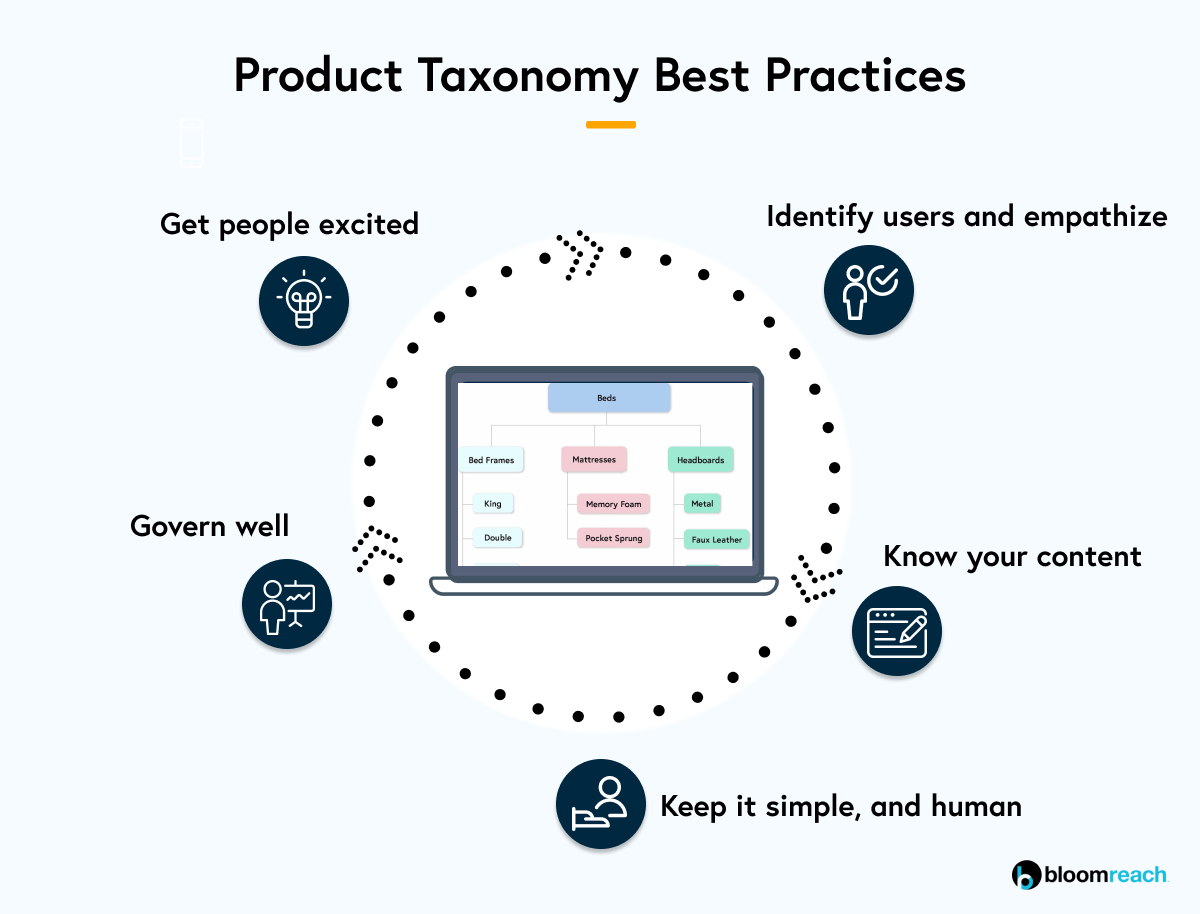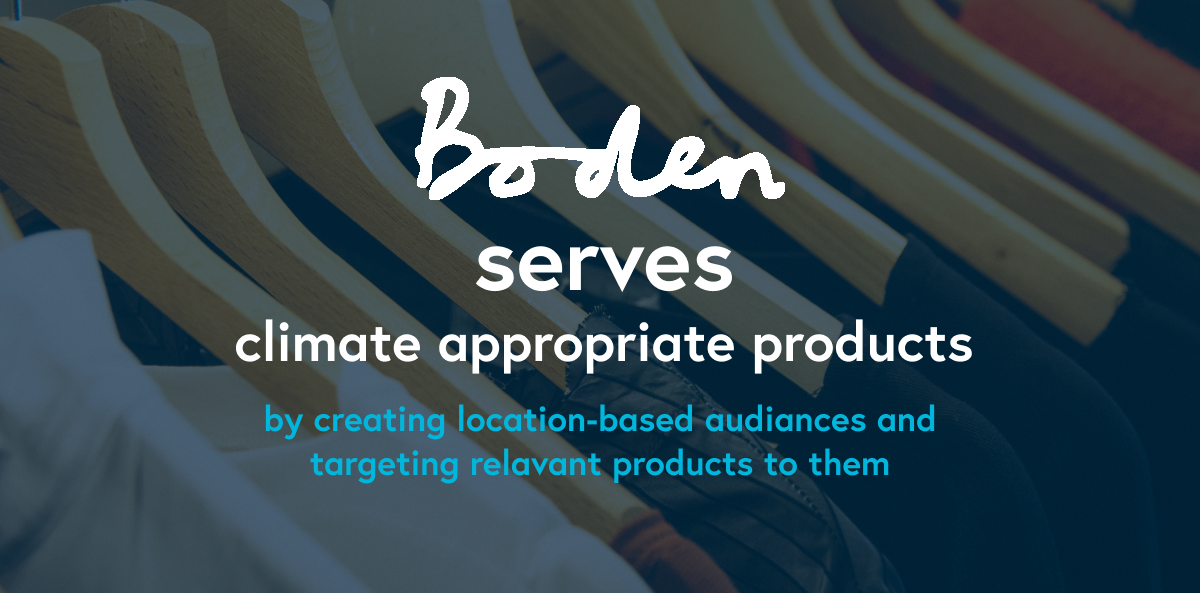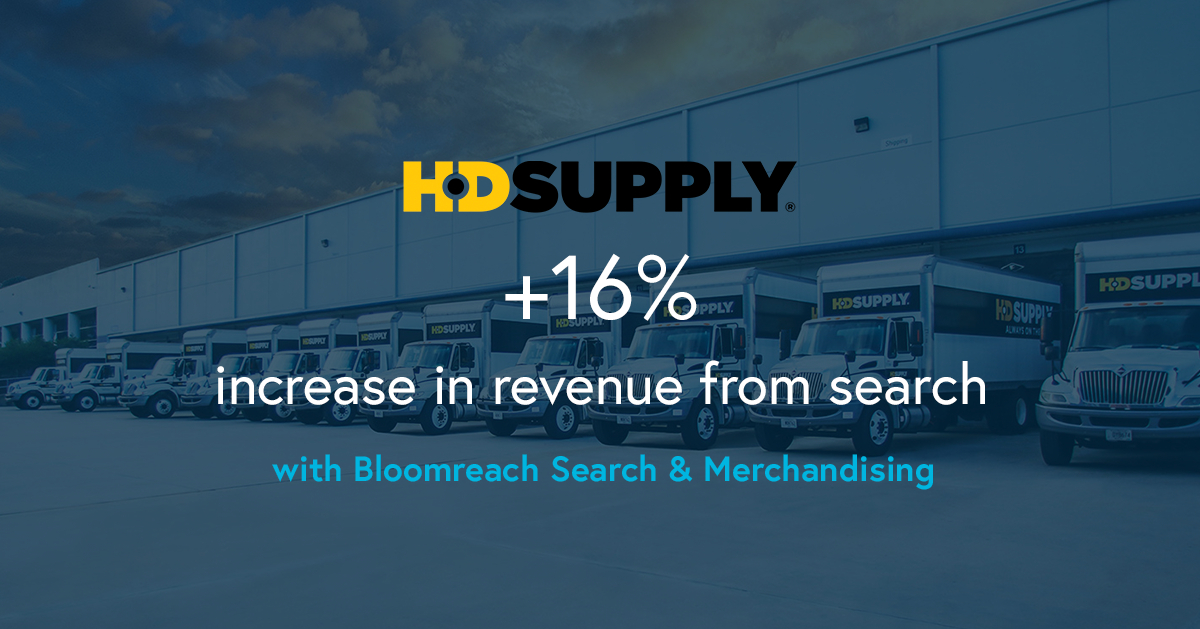Energy Feedback Technology a Review and Taxonomy of Products and Platforms
Taxonomy - information technology'southward got naught to do with paying your taxes, but it does have a lot to do with your bottom line.
Whatever company wishing to sell products online needs to give them the correct names and put them in the correct categories. Otherwise customers, both electric current and new, simply can't find them.
What is Production Texanomy
Product taxonomy is a construction to organize all available products in a manner that customers tin can find what they want in the least clicks possible.
Generally they work every bit a product hierarchy put products into categories. Then tags are used to group products into each category. Attributes (e.g. color or size) are and so applied to the products in each category.

The end consequence is that customers tin can move easily through all levels to find exactly what they desire.
Multiple independent taxonomies can also be overlaid for different views on the same information. For example, in a database of music a product could be found via genre, or record label.
When the right production shows up in a search, the adventure of it being purchased grows exponentially. Taxonomy organizes everything in the background to make that happen.
Taxonomy is Important - Here'south Why
Imagine a client searching the 'Fresh Food' category to find bread. They come up empty-handed, as that production is but found in the 'Bakery' category.
With limited shopping time, the client becomes frustrated and abandons the search. Not an platonic upshot. When taxonomy is not properly carried out, the results are reflected in lost sales. Over time, confidence in the brand will take a hit too.
Y'all might wonder why all of this can't be handled via the search bar.
The answer is: If information is not well organized in the first identify, search doesn't work. It's the classic 'garbage in - garbage out' scenario.
In that location is no avoiding product taxonomy. Information technology's the groundwork retailers must do to preclude users leaving their site before finding what they want.
How Product Taxonomy Can Boost Sales
A Forrester research report constitute that poorly architected retailing sites sell l% less than improve organized sites. Where searches failed, 47% of users gave upwardly later just one search, and just 23 percent tried three or more times.
It'south clear that if information is not properly categorized, website visitors will rarely recoup past standing to attempt and find the production(s) they desire. They only surrender.

Visitors to your site are generally searchers or browsers. With browsers, products must exist in the right place, but you do get a petty bit of extra time to deliver on the search terms.
Searchers however, know exactly what they are looking for. They volition be more specific and expect to find exactly what they want, alongside a list of alternative selections.
A well-built taxonomy will permit your website to display related products. Rather than losing a sale if a product is not available, yous become that conversion by offering something else.
Conversion rates aside, taxonomy too has a big impact on internal decision-making. Stiff reporting and analytics are needed to know which products are selling and which are non.
Every bit with any reporting arrangement, good input is key. Distinct categories and right labeling make information technology much easier to deliver accurate stats beyond a total production itemize.
When it'south clear what each product is called and where it sits, reports are more reliable. Decisions on what products to feature or drop therefore become more data driven and constructive.
Why Having a Taxonomists in Your Team is Important

Many companies recognize the importance of a good, clean taxonomy, simply not are all in a position to practice something about it.
Some businesses put serious resources behind product taxonomy. They hire dedicated taxonomists, people with advanced degrees in library or information scientific discipline, even linguistics.
That'south not possible for the average company still. In many cases, taxonomy is just a side projection, i that's added onto a long list of other tasks.
Assuming most companies won't take such defended resources at their disposal, how can they get their product taxonomy in shape?
The main matter to remember is that good taxonomies are not created to be a vacuum. They interact with the world a user lives in, beingness informed by things like user behavior, trends, even cultural differences. Some all-time practices are outlined below.
Product Taxonomy Best Practices
On the surface, it may non seem the near glamorous of endeavors, but building or improving your taxonomy directly leads to increased traffic and sales.
Getting information technology right means looking across logic and navigation. A good production taxonomy will likewise account for the human being element.
Hither are 5 best practices you lot tin apply:

![]() Get people excited
Get people excited
It's important to go the internal team on board. That mode they volition be more than supportive. Part of that will exist evangelizing the benefits of proficient naming and solid categorization.
When people tin observe products quickly, they buy more than and they'll keep coming dorsum. Loyal customers benefit everyone in the visitor.
Explain why edifice or refining the taxonomy is an important process. Try to build an understanding that customers may use a different vocabulary to the one used in-house.
Illustrate these differences to bring information technology to life. For example, a customer might not refer to a product as being a particular RAL color. They might use terms like 'moss green' or 'racing automobile red'.
![]() Identify users and empathize
Identify users and empathize
Taxonomies should be built for users, so this practise comes with an element of (information-driven) psychology. You need to sympathise people'south behavior and the language they employ.
To sympathize the type of taxonomy that suits your customers, you need to study them a little.
See how they navigate your site. Mine data on their search behaviors to run into how they call up and how they might approach your site to discover a production.
Data mining aside, you can as well just talk to people. Ask what they like and what they don't like nearly the current setup. Come across if they can describe what their platonic system would expect like.
If it's not working, resist the urge to blame the user. They may not e'er type in the right terms, just information technology's non their job to figure out your site.
Retrieve, a good taxonomy is built for the user, not the other style around.
![]() Know your content
Know your content
Get a deep understanding of the data yous're working with and how it'due south structured.
Is it documented?
Does it come from multiple sources?
Where does information technology all sit?
Armed with the fuller picture, whatsoever efforts to organize things will be more constructive. This will also assist you lot estimate the projection'southward size and to prioritize.
For example, information technology could be the case that you don't take enough content to support a item category. If and so, consider incorporating that at a later phase.
Sometimes things can wait, while you focus on items that are more pertinent. When you know what content really matters, it will be easier to make those decisions.
![]() Keep it unproblematic, and human
Keep it unproblematic, and human
Edifice a production taxonomy can begin with something every bit simple as writing on cards.
Write terms on cards and sort them. Visualize the product categories. Decide where products, with their various attributes, sit within them. And lay it all out.
A complicated taxonomy won't work, and then keep it simple. When it comes to options and the listing of choices beneath them, become wide and shallow, rather than narrow and deep.
Keep hierarchies to 2 or iii categories. Yes, users desire organisation, but they don't want an endless list of categories to trawl through.
Be consistent with names and remember the user at every stage. Utilise terms they can understand and employ synonyms to facilitate search. Fifty-fifty for B2B customers, try to avoid a heavy employ of industry jargon.
Although information technology tin exist tempting for products that don't seem to fit anywhere, attempt to avoid the dreaded 'Other' category. In reality, users rarely spend time looking in that location.
![]() Govern
Govern
When you have built a taxonomy, you need to notice how people use information technology. Exist prepared for people to interact with your taxonomy in ways you never imagined.
This work is never truly washed, taxonomies constantly modify, peculiarly in retail. Regular reviews and modifications of the existing construction will be part and parcel of an ongoing attempt.
New metadata will be used to drive personalization, pretty much continuously.
It volition all come up downward to what users are doing. New ideas (like selfie-sticks) will announced out of the blue and they will apace become must-accept terms. Adding product names, categories and attributes never stops.
All the while, the taxonomy should be shared across business units. Customers don't have, and don't want, any visibility over the internal company structure. Make sure anybody speaks with the same vocalism.
eCommerce is Powered past Taxonomy
In essence, proper naming and categorization minimizes the corporeality of work each customer must exercise to buy exactly what they want. That'southward the end goal, and the driver behind the scientific discipline of taxonomy.
Equally you lot embark on your ain taxonomy projection, there are plenty of tools to help along the way. Classification templates and smart database management software are but some examples of what's available.
Production taxonomy is an important foundation for ecommerce success and it's an area that is changing rapidly.
Retailers tin fast-track their efforts to build or better their taxonomy with the help of a good applied science partner. This partner can sort through the details, make sense of information technology all, and evangelize a workable taxonomy.
With all of this under control, a retailer tin focus on what counts - keeping upward with what the customer is saying and making sure that's translated back into the taxonomy.
How Companies Use Production Taxonomy and Site Search

[B2C Example]: Boden
Boden realised that personalising the client journey was the fundamental to their time to come success. However, they were beingness constrained by legacy tools and and so gear up about on a multi-year transformation project to upgrade their platforms.
Site merchandising is crucial to providing a strong digital customer feel. However, the team was working with tools that required a lot of manual work and were therefore time consuming and slow to marketplace for trading changes. Equally part of the digital transformation project, they looked for a solution that would let them to use their time more wisely and strategically. In particular, they wanted a solution that would:
- Provide a personalised experience for their customers
- Reduce the corporeality of manual rule-writing
- Give the team more agility and flexibility to react to client needs
These wishes led Boden to check out Bloomreach'due south Search and Merchandising product to understand how it could assistance to boost Boden'due south success.

[B2B Example]: HD Supply
HD Supply is in the process of rethinking its entire digital strategy. Certain hurting points meant the multi-billion dollar company wasn't innovating at a fast plenty rate.
Brooke, Senior Product Manager, eCommerce at Hard disk drive Supply, is instrumental in the digital transformation to get processes up to speed. Owning everything from the homepage to category pages to item pages, Brooke was challenged with upgrading the site experience.
Brooke started by looking at the channels available and how customers interact with them. From customer behavior, Brooke realized buyers want to be able to make a purchase apace and reliably: "They want to exist able to notice the right products fast, be certain they're picking the right products, order them and get back to their day. It's all about making that Add to Cart really easy."
A smooth buying experience was core to the strategy moving frontward.
With the knowledge that using equally much technology out-of-the-box as possible would avoid heavy customization farther downwards the line, Brooke settled on Bloomreach every bit her site search applied science of choice.
Nosotros rely on the Bloomreach algorithm to really drive the majority of our search results and navigation and filter placements.
Taxonomy and The Search Function
At that place is a great opportunity for retailers to help their website visitors better, drastically reduce the number of terminated transactions, and take their website converted improve than ever.
What they accept to do for that?
Ensure that their search function offers added value. The basis of a good search function that yields relevant results is a relatively unknown yet very important principle of taxonomy. Information technology is the uncrowned hero of the smart search functions and strong conversion ratios.
Bloomreach offers a set of algorithms and avant-garde merchandising tools to fully optimize each visitor's search, browse and landing page experiences. Motorcar Learning sets your site up for calibration, while merchandisers can accommodate and refine results to perfect the product grid.
Allow us walk you through how our platform can work for your organization. Book at demo today.
massenburgarly1977.blogspot.com
Source: https://www.bloomreach.com/en/blog/2019/product-taxonomy
0 Response to "Energy Feedback Technology a Review and Taxonomy of Products and Platforms"
Post a Comment